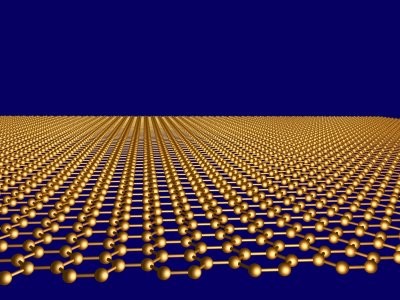
Scientists create a “two-dimensional material” never seen in nature
A group of scientists at University in Melbourne has managed to create a two-dimensional material, no thicker than atoms, something that has never been seen before in nature. The incredible breakthrough will not only revolutionize the way we do chemistry but could be applied to enhance data storage and make faster electronics.
They found an extraordinary, yet a very simple method to create atomically thin flakes of materials that don’t naturally exist as layered structures.
They use non-toxic alloys of gallium as a reaction medium. This covers the surface of the liquid metal with atomically thin oxide layers of the added metal rather than the naturally occurring gallium oxide.
This oxide layer can then be exfoliated by simply touching the liquid metal with a smooth surface. Larger quantities of these atomically thin layers can be produced by injecting air into the liquid metal, in a process that is similar to frothing milk when making a cappuccino.
We predict says Professor Kourosh Kalantar-zadeh that the developed technology applies to approximately one-third of the periodic table. Many of these atomically thin oxides are semiconducting or dielectric materials.
Semiconducting and dielectric components are the foundation of today’s electronic and optical devices. Working with atomically thin components is expected to lead to better, more energy efficient electronics.
 English
English Arabic
Arabic


